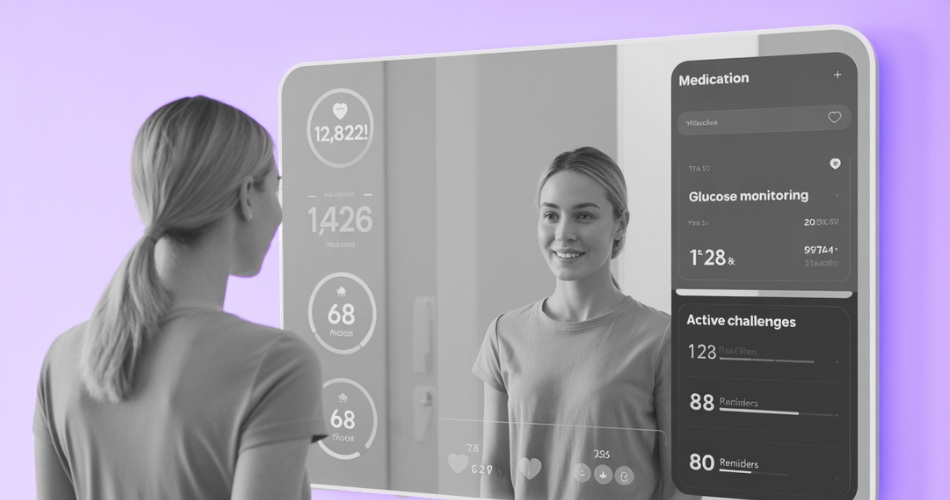
Digital health is entering a new chapter. What used to be a niche category of step counters and heart-rate trackers has evolved into a broad ecosystem of FDA-cleared monitoring tools, AI-powered insights, and home devices designed to scan, track, and analyze daily behaviors. This shift is changing how many people relate to their health—sometimes in ways that genuinely support prevention, and sometimes in ways that demand more caution than the marketing suggests.
As more of these tools make their way into living rooms and onto wrists, the central question becomes less “What can this device measure?” and more “What does this measurement actually mean for my health?”
That distinction matters for anyone trying to navigate the rapidly expanding world of consumer-grade health technology.
A Broader Look at the Tools Changing How We Monitor Health
Health monitoring no longer lives exclusively in the clinic. We’re seeing an expansion across categories—continuous glucose monitoring, smartwatch-based blood-pressure detection, AI-enabled body-composition scans, and even smart mirrors that assess posture, sleep, and metabolic cues as part of a morning routine.
The FDA’s clearance of over-the-counter metabolic tools—such as the Signos Glucose Monitoring System, designed to pair glucose readings with AI-based interpretations—signals how far consumer tech has moved into traditionally clinical territory. Meanwhile, the Apple Watch gaining FDA-cleared hypertension-detection capabilities shows how a device once marketed for convenience is becoming part of routine health monitoring for millions.
Beyond wearables, companies like Withings are developing smart mirrors that combine body-composition analysis, heart-rate trends, and personalized feedback in a single interface. These innovations mean people can access data streams that were once available only through specialized testing: glucose variability, blood-pressure fluctuations, cardiac rhythm, nighttime breathing patterns.
For many consumers, that access is empowering. For others, it raises new questions about accuracy, interpretation, and how much data is genuinely helpful.
Where the Promise Meets the Practical—and the Pitfalls
The promise is compelling: tools that reveal how your body responds to daily choices, helping you make more informed decisions long before symptoms surface.
Data without clinical context can generate confusion—or false confidence. Consider the layers of complexity:
• Clinical validation varies widely.
Some devices undergo rigorous FDA evaluation; others operate in a wellness gray zone. Research from arXiv highlights persistent gaps in validation and equity standards across consumer wearables, making it difficult for users to know what’s clinically meaningful and what’s noise.
• Data overload is real.
For many people, continuous notifications and trend lines can lead to anxiety rather than clarity. Numbers that appear “abnormal” may be physiologically normal, especially without an understanding of ranges, variability, or context.
• Privacy questions persist.
Several studies point to ongoing concerns about how device manufacturers collect, store, and share personal health data—particularly as smart inhalers, glucose sensors, and wearables increasingly rely on cloud-based systems.
• Measurement does not guarantee change.
A glucose spike after a meal only becomes meaningful when the information leads to an appropriate behavioral adjustment. Without a decision-making framework—or support from a clinician—data becomes a passive record rather than a tool for improvement.
Digital health can absolutely support better outcomes, but it works best when consumers pair curiosity with discernment and recognize the limits of what a device can interpret on its own.
How to Use Consumer Digital Health Tools Wisely
If the tool doesn’t help you take clearer, healthier action, it’s not serving its purpose.”
Here’s how individuals and clinicians can approach this technology with strategy rather than novelty:
Start with a purpose—not a device.
Before buying anything, identify what you want to understand: metabolic response to meals, sleep recovery, blood-pressure patterns, stress load, or general health habits. Your goal should drive the tool—not the other way around.
Verify accuracy and clearance.
Ask whether the device has FDA clearance for the function you’re using. Review sensitivity, specificity, or performance data when available. A clinically validated tool provides more stable footing for decision-making.
Translate data into manageable actions.
If your glucose rises with certain meals, adjust meal timing, composition, or portion size. If your wearable flags elevated blood pressure, use it as a signal to schedule a clinician-based evaluation—not self-diagnose or self-treat.
Track your data—not the company’s.
Review app permissions, data-sharing rules, and export options. Maintaining control over your health information is essential, particularly as these devices become more diagnostic.
Keep the fundamentals first.
Monitors and AI insights can support better habits, but they don’t replace the basics: sleep, stress management, movement, nutrient-rich meals, and meaningful routines. Technology works best when it amplifies—not substitutes—those foundations.
Know when to bring in a clinician.
Any persistent changes in mood, energy, blood pressure, glucose trends, heart rhythm, or recovery patterns deserve professional review. Tools can spark early awareness; they cannot replace diagnostic evaluation.
Conclusion
The next wave of digital health is both exciting and complex. Clinical-grade measurements are becoming more accessible, and AI-powered interpretations are helping many people see their health in a new light. But as these tools enter daily life, the challenge shifts from gathering more data to using it wisely.
For those willing to pair technology with thoughtful action, the potential is real: earlier insights, better prevention, and more personalized understanding of how the body responds to everyday choices. But the most successful users are the ones who remember that devices inform decisions—they don’t dictate them.
Sources





